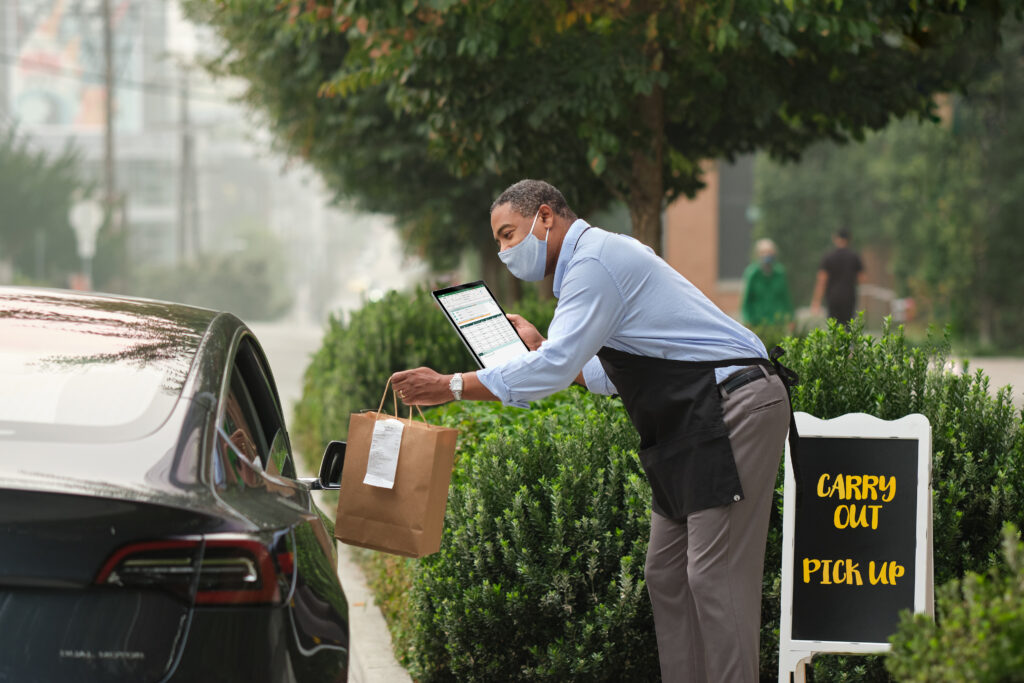
Reduce the load on frontline workers with the right management technology
One of the few silver linings from the pandemic has been greater recognition of the critical role frontline workers play, whether it’s in a hospital, shop, or factory. For my first blog post of 2022, I want to share my observations on the increased attention organizations are paying to frontline workers, and why that’s motivated my team to create solutions centered around the Zero Trust security model for frontline workers that specifically address their unique business challenges.
From changing health and safety rules and supply chain issues to angry customers, frontline workers have often borne the brunt of the pandemic. Lancet, a leading medical journal, surveyed over 20,000 healthcare workers last year, with 49 percent reporting burnout, 43 percent reporting work overload, and 38 percent reporting anxiety or depression.1 A similar study was done with United Kingdom retail workers: 63 percent of retail managers felt overwhelmed by the extra work and 84 percent of all workers agreed they had experienced a deterioration in their mental health during the pandemic.2 According to Microsoft’s own research, 4 in 10 frontline workers say they don’t have the right technology to do their job effectively, only increasing the load.3
The current staff shortages are putting even greater pressure on the remaining frontline workers. Four million workers have left the US labor force.4 There are similar shortages in the United Kingdom: 10 percent of London’s firefighters are not working because they are sick or isolating, and staff absences in London’s hospitals tripled last month. Unpredictable staff shortages are adding further to the workloads of already stressed frontline workers.
Microsoft’s Work Trend Index Pulse Report3 surveyed 9,600 frontline workers and was updated earlier in January 2022. The findings are clear:
- 60 percent of frontline workers wish more was being done to help with physical exhaustion.
- 57 percent of frontline workers wish more was being done to support their mental health.
- 55 percent say they’ve had to learn new technology on the fly, with no formal training or practice.
What’s more, 58 percent believe that work stress will either stay the same or worsen in 2022.
All these statistics cement the point that frontline workers have enough to worry about right now—they need our help. Technology must urgently make their lives and daily tasks easier.

Microsoft is committed to helping the two billion global frontline workers reduce their mental fatigue and do their jobs with easy-to-use technology—all the while protecting sensitive information—such as using single sign-on and sign-out of the devices they use every day. As a result, IT must help frontline workers protect these devices, especially as cyberattacks on both information workers and frontline workers only increase. For example, according to the 2021 Ransomware Survey Report from Fortinet, ransomware grew 1,070 percent between July 2020 and June of 2021.5 In a study published by Harvard Business Review in 2021, 43 percent of the more than 6,000 companies it surveyed had suffered a cyberattack the previous year.6 The pandemic has increased the potential attack surfaces, particularly with frontline workers.
Extending Zero Trust to the frontline
To address this increasing threat, Microsoft recommends that companies strive to achieve a Zero Trust security model across all endpoints in their digital estate. As the saying goes, you can’t manage what you can’t see. This means that a Zero Trust model can’t just be limited to the endpoints used by information workers—it must extend to devices on the frontline too. If you can’t distribute compliance or security policies to all your managed devices (including those for frontline workers), you can’t implement a Zero Trust model.
Microsoft is in a unique position to address the challenges to frontline workers. Our holistic approach is based on three principles:
- Help the frontline by ensuring they can always choose the right tool for the job.
- Make it easier for frontline workers to share devices, which yields cost savings in owning a complex array of devices.
- Empower customers to manage the experience for the frontline themselves, including IoT devices that aren’t tied to employees.
Flexibility provides options for frontline worker tools
Our vision starts by ensuring that a frontline worker always has the right tool for the job. There’s nothing more frustrating than not being able to use the right device because it’s lost or because you lack the permissions you need to use it. The logical extension of enabling “the right tool for the job” is that Microsoft takes our leadership in Windows and extends it to all other commonly used platforms. Microsoft Endpoint Manager already supports platforms from Android and iOS to Windows and macOS, as well as Microsoft 365 apps including Microsoft Teams. For specialty headsets, such as RealWear, we expanded our cross-platform approach to enable customers to manage devices that are built on Android Open Source Project (AOSP). This opens options for organizations to equip frontline workers with devices that enable them to collaborate with colleagues while working safely, hands-free.
In this world of work that includes both frontline and hybrid workforces, we’re also developing technology to support virtual reality and augmented reality devices, like Microsoft HoloLens, to power collaboration with a shared holographic experience on platforms such as Microsoft Mesh. Endpoint technology and business scenarios will always evolve; our commitment to empowering our customers to choose the right tool for the job remains the same.
Shared devices
The second principle is to ensure customers have the flexibility to also choose between a dedicated and a shared device approach based on the needs of their business—whether that’s cost reduction, IT management overhead, or deployment consistency. Unlike information workers, frontline workers may not necessarily need to have their own device for a task, especially when they’re shift workers, making shared devices a more cost-effective solution. Shared devices also make more sense when staff shortages keep shift patterns fluid. With how quickly business needs change today, a shared device approach lends itself to supporting an agile deployment of the latest technology, or use form factors, and apps tailor-made for a given industry. Supporting shared devices is foundational to ensuring the technology works. For example, Siemens AG, a global enterprise that delivers technological innovations across industries, recognized that their warehouse workers needed purpose-built device management profiles and settings. To meet these needs, Siemens has been using Microsoft Endpoint Manager to customize these shared devices based on specific warehouse use cases.

Self-serve devices on the frontline
Finally, we recognize that the frontline may be represented by your digital devices, not just your workers. When the endpoint is on the frontline, such as customer self-serve kiosks, tablets, or some other internet-connected app or endpoint, managing the experience becomes mission-critical for your business and simplifies the day-to-day activities of the people on the frontline. Often, device management discussions are limited to traditional endpoints. In today’s world, IT needs to think about a broader range of smart devices that help further ease the burden of frontline work and mitigate the risks of the increased attack surfaces. One example of this is kiosks. Customizing the home screen, remotely determining the performance and health of the device, and thus the experience can make or break your customers’ experiences and your ability for other frontline workers to do their job.
Learn more
Helping the frontline overcome the challenges wrought by the pandemic is what’s driving me at the start of 2022. I see the strain that staff shortages are causing frontline workers, and the implications this has on employee morale and consequently staff retention for our customers. Achieving a Zero Trust security model that includes endpoints on the frontline—managing the experience on apps and endpoints workers use every day—is foundational.
- Microsoft Work Trend Index
- Evolving Zero Trust whitepaper
- Empowering 2 billion global frontline workers
- Microsoft Endpoint Manager blog
- Frontline Workforce on the Microsoft Virtual Hub
- Microsoft Cloud for Retail
1Prevalence and correlates of stress and burnout among U.S. healthcare workers during the COVID-19 pandemic: A national cross-sectional survey study, Kriti Prasad, Colleen McLoughlin, Marin Stillman, Sara Poplau, Elizabeth Goelz, Sam Taylor, Nancy Nankivil, Roger Brown, Mark Linzer, Kyra Cappelucci, Michael Barbouche, Christine A. Sinsky, Elsevier, The Lancet. 16 May 2021.
2Data: 84% of retail staff say pandemic has damaged their mental health, Hugh Radojev, RetailWeek. 15 June 2021.
3The Work Trend Index, WorkLab, Microsoft. 22 March 2021.
4Omicron Is the Latest Blow to Pandemic-Weary Frontline Workers, Philip Marcelo, Anne D’Innocenzio, Bobby Caina Calvan, AP News. 24 December 2021.
5Fortinet Ransomware Survey Shows Many Organizations Unprepared, Fortinet. 29 September 2021.
6Ransomware Attacks Are Spiking. Is Your Company Prepared? Brenda R. Sharton, Harvard Business Review. 20 May 2021.




